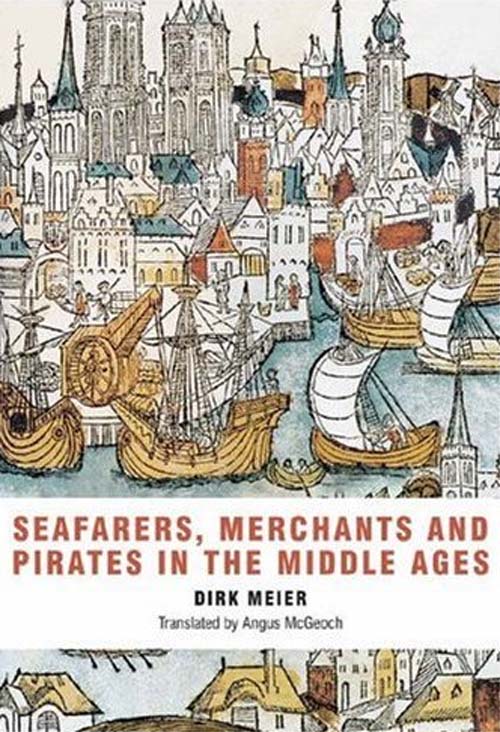Seafarers, Merchants and Pirates in the Middle Ages
Book Review

Seafarers, Merchants and Pirates in the Middle Ages by Dirk Meier
(Boydell Press), 2009
184pp. £14.99 paper, ISBN 978-1843-383512-7
The first thing that stands out in this book is the wonderful colour illustrations and maps. The second is the discussion of the nature and construction of ships such as the cog, carrack and caravel, a technological dimension often lacking in histories of medieval trade. During the Middle Ages, the North Sea and the Baltic were vibrant centres of international trade, the result of the tentative development of the early sailors who ventured into these treacherous waters to fish, pillage, conquer and trade.
Without maps or compasses, they established a cross-continent trade route through the rivers that flowed through Europe to the Black Sea and to the west discovered Iceland, Greenland and North America. This laid the foundations for the development of extensive trade routes, better ships, larger harbours and the emergence of wealthy coastal towns such as Dorestad, Ribe and London that acted as centres for trade drawing produce from their resource-rich hinterlands. By the thirteenth century, the Hansa was an association of ports from Bruges to Riga. The downside of this economic expansion was the emergence of pirates such as the Vitalienbruder privateers who successfully exploited its vulnerabilities. The in an excellent book, sympathetically translated by Angus McGeoch, that tells the story with verve and provides an excellent study of what was perhaps the first expression of European economic cooperation.

